We've all been hooked on the Netflix series Dark. It's the type of show that comes out of nowhere, completely messes with your head, and you can't help but be hungry for more. German science fiction television series by Baran bo Odar and Jantje Friese premiered on Netflix in 2017, and if you ask us three questions about the show in a row, we may not know the answer.
The premise is set in a small town called Winden, where a child called Mikkel is lost. And then fairly substantially more—a story that carries us through multiple timelines, generations, and worlds as well. What begins as an interesting journey is turned into a time travel adventure of destiny and how we choose to live.
Now, the surprise. Dark's not so much the back and forth in time. It's the way all of that is connected. The manner in which secrets of one household seep out over the years. That repairing the past does not repair the future. And that sometimes things just gotta go the way they're gonna go—no matter how you resist it.
And at the end of last season, we're already dealing with alternate realities and something called "Origin World"—a reality that seems to be the origin of the universe. Our two leads, Jonas and Martha, embark on one final mission to try to fix the timeline once and for all. And, in doing so, they wipe themselves out of existence.
Now, this decisiveness was adored by the fans. It was lovely. It brought it back full circle. But there were some fans scratching their heads and wondering whether it did actually make sense—or possibly just raised more questions.
We’ve seen so many smart, wild, and creative ideas from fans who just can’t let go of Dark. They’ve dug deep into every episode, every line of dialogue, and every plot twist to come up with their own versions of what really happened—or what could’ve happened.
So, we’re diving into 10 of the most interesting, most mind-blowing Dark fan theories out there. These aren’t just fun theories—they’re serious ideas that make us look at the show in a whole new way.
The bootstrap paradox world-building theory

Let us talk about one of the great ideas in Dark—the bootstrap paradox. It's something that is in a loop but does not have a beginning. The official ending tells us that the two main worlds (Eva's and Adam's) were created by a Tannhaus experiment that went wrong. Hence, by removing the trauma that caused the same, the worlds and the time loop are destroyed.
However, some fans do not buy it. They do not think of the loop as happening by accident—it is simply the nature in which the universe works in Dark. The Origin World? Maybe that fits into the loop, too.
So what supports this theory?
Claudia knows about the Origin World, even though she has never been there. That implies that the loop goes further than we think. Maybe the Origin World isn't the real start after all.
Also, there are characters like Tronte Nielsen because of time loops. If you take away the paradox, nothing works anymore. The loop could simply be the normal order here.
The quantum superposition theory

Dark does get quite science-y at times, particularly when it is referring to quantum mechanics. One of the theories that the show is hinting at is superposition. That is, particles, at a particular moment in time, are in more than one state simultaneously.
The ending of Dark literally forgets this rule. In the end, the show gives us only one "real" world — the so-called Origin World — and informs us that the worlds of Adam and Eva don't exist anymore. But isn't that the opposite of the whole superposition thing the show kept referring to?
But perhaps all three worlds — Adam's, Eva's, and the Origin World — are supposed to exist somehow, all jumbled up in tandem. Like having a lot of choices all at the same time. Not so much one dominating the others in the end.
And another headache: if Jonas wipes himself out by stopping Tannhaus's experiment… then who traveled back to wipe him out? That's the grandfather paradox — if you kill yourself, how did you exist in the first place so you could kill yourself?
Claudia as the true architect theory
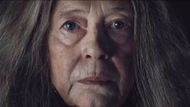
Dark explains to us that Claudia had discovered the Origin World and ended everything there. But what if Claudia weren't simply a clever player in the game — what if she'd built the entire board?
This is the theory: Claudia didn't pull the answer out of thin air. Perhaps she built the loop, the timelines, the entire architecture of this insane universe — all because of a single purpose: to save one being: her daughter, Regina.
Yes, all of it — the time traveling, the paradoxes, the war between Adam and Eva — could have been Claudia's plan all along. And the so-called "Origin World"? That might not be the beginning, but another version, Claudia designed to let Regina live.
The simulation hypothesis

Here's one of those classic standby fan theories that some are certain exists: what if Dark is simulated? Maybe it's all through some computer simulation arranged by Tannhaus—or, alternatively, someone else—to run through different outcomes and find a reality wherein his family exists. That would explain all the loops and paradoxes.
The quote "the beginning is the end, and the end is the beginning" shows how loops occur in computer simulations. And when Jonas and Martha later vanish from the show, it is just a system reload—like they got wiped out.
The Tannhaus as God theory
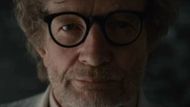
Let us talk about H.G. Tannhaus for an instant. Maybe he is not really an old man who tampered with time to resurrect his family from the dead. Maybe he is more of a godlike figure — a person who is creating and destroying whole universes.
The idea is that the world we see at the end — the "Origin World" — isn't actually the true original. It's the version that Tannhaus has worked up. And possibly that he has been retrying it and retrying it, trying to do it correctly, trying to make one where his family exists.
And then there's all the biblical material in Dark — Adam, Eva, Noah. One can't help but notice how godly Tannhaus appears when the series puts religious-sounding names and a theme of creation around him.
The unreliable narrator theory
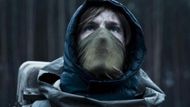
We’re only seeing things through the eyes of certain characters like Jonas, Martha, and Claudia. And none of them can really be trusted.
They all have their own agenda. They twist, cover, and determine things for their agendas. So by the time we get to the end — the entire "Origin World" twist — maybe that's just the last version told by whoever's living. Not the truth, but their truth.
And besides, recall that phrase the show uses: "What we know is a drop, what we don't know is an ocean." That's about it. Perhaps we're merely being given a drop of the whole picture, and the truth itself is out there — entirely unknown.
The infinite loop theory
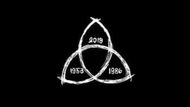
Here's one of the theories that still rolls with it: Martha and Jonas never broke the loop—just initiated a new one. The Origin World is maybe just another iteration of the same thing, but they've got their own problems. In all honesty, the loop never really breaks.
The dinner scene at the end feels familiar—like we’ve seen it before. That’s a clue that history might repeat itself. And when characters feel like something’s missing, it could be the loop trying to start again.
The fate vs. free will theory
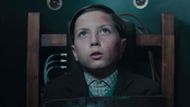
Perhaps Dark is actually about fixing time. It's about accepting that some things can't be fixed. Jonas and Martha disappearing? Maybe that's not a win—it's them giving in to fate.
Adam and Eva always try to change the future—and fail. The show also explores the idea of eternal recurrence, where things just keep happening again, no matter what we do. Maybe we don't possess such power as we think.
The Regina as the true protagonist theory
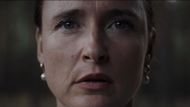
What if the entire series isn't even about Jonas or Martha—but about Regina? Whatever Claudia is doing might be for her. So when Regina appears at the end, that's the true triumph.
Regina's existence isn't based on any time paradox. She's likely one of the most "normal" characters on television. And that final scene? All about Regina. Not Jonas. Not Martha.
The metafictional commentary theory
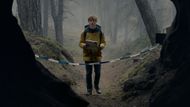
Now this one's a bit meta. There are certain viewers who think Dark is not a science fiction story — it's a story of stories.
Deconstruct it: all the loops, the repeating takes, and the reflected moments? They're not even technically a part of the story — they might be showing us how stories are being drafted, redrafted, and edited. On paper. This way, the "Origin World" is the neat, finished product — the last draft after all the rough ones.
And where do Martha and Jonas get to? It's like the author deleting her favorites — not that they weren't important, but because the book needed to end. Authors refer to this process as "killing your darlings" — deleting what you adore so that you'll have a closer-knit story.
